Travel period 22nd Jan 2017
Watching Japanese Style of Wrestling!
Have you ever wondered what it’s like to watch a sumo match?… This sport is extremely popular among Japanese people, with tickets to grand tournaments selling out quickly.
We were determined to view a sumo wrestling match during our trip to Japan, so we organised our trip to Tokyo during a Sumo Grand Tournament and finally had a chance to view Japan’s national sport.

What is ‘Sumo’?
Sumo is a Japanese style of wrestling and Japan’s national sport. Sumo wrestling originated in ancient times as a performance to entertain the Shinto deities. Only men practice sumo professionally in Japan.
The sport is heavily dictated by rituals and routine, requiring professional and aspiring-professional sumo wrestlers to reside in sumo stables and wear traditional Japanese clothing.
Sumo wrestlers start their training early in the morning and normally eat chanko-nabe (Japanese stew commonly eaten in vast quantity by sumo wrestlers as part of a weight-gain diet) to get bigger in size.
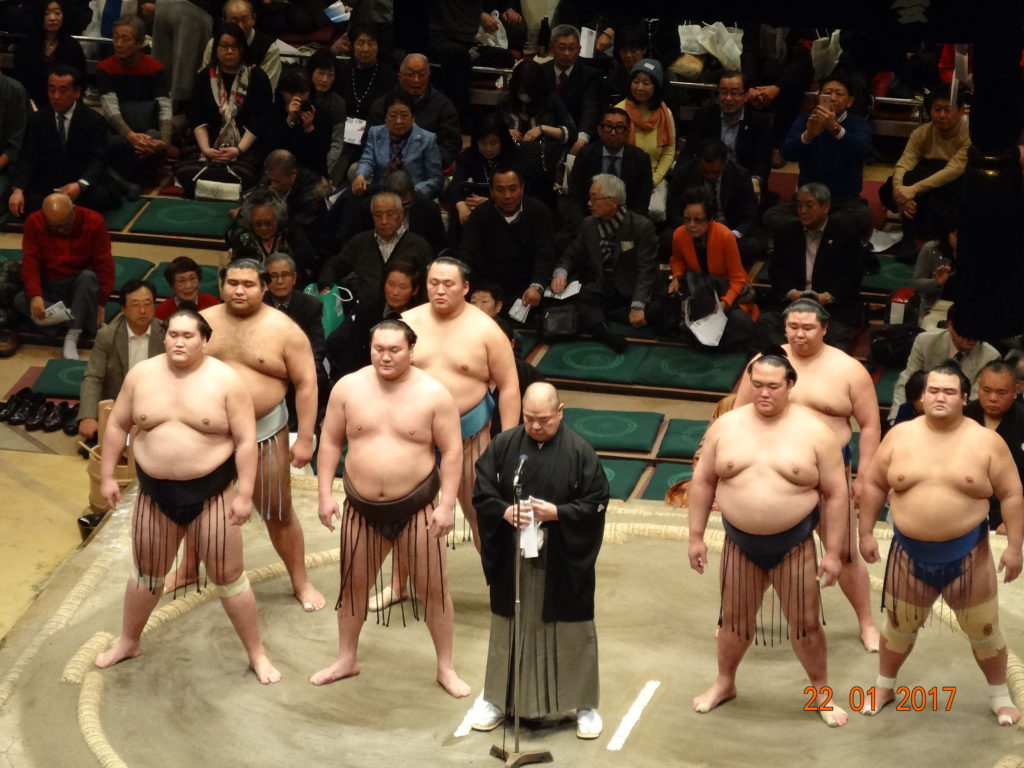
All sumo wrestlers are classified in a ranking hierarchy (banzuke), which gets updated after each tournament based on the wrestlers’ performance. Wrestlers with positive records (more wins than losses) move up the hierarchy, while those with negative records get demoted.
The top division is called “Makuuchi” and the second division is called “Juryo”. At the pinnacle of the sumo hierarchy stands the yokozuna (grand champion). Unlike wrestlers in lower ranks, a yokozuna cannot be demoted, but will be expected to retire when his performance begins to worsen.
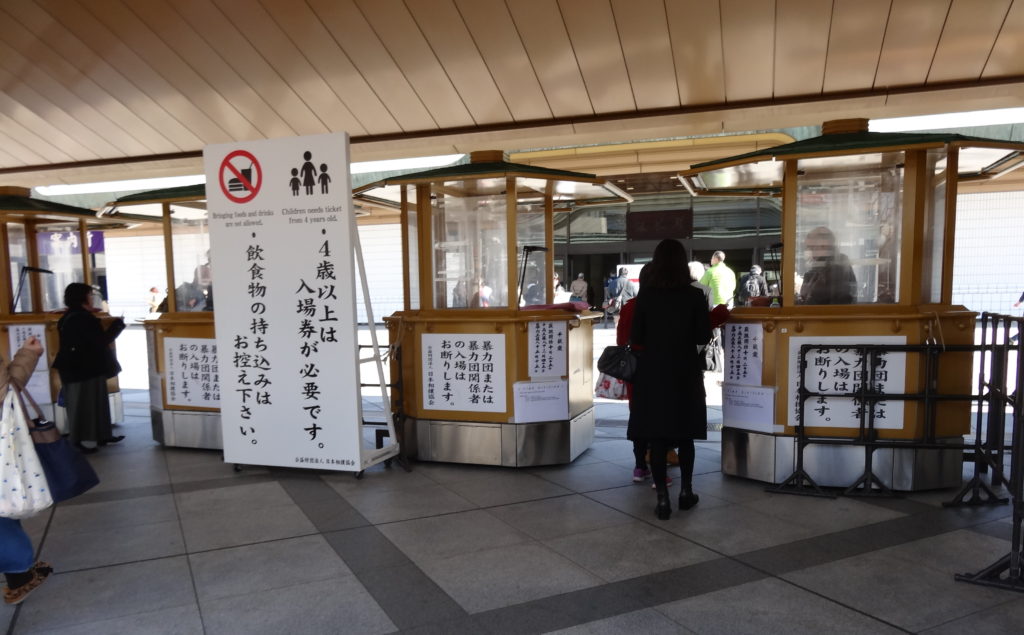
For around two centuries, Ryogoku has been the center of the sumo universe. Professional sumo tournaments are held in Japan six times per year, once in every odd-numbered month, and half of these tournaments are held in Ryogoku Kokugikan Sumo Hall (January, May and September). The remaining three tournaments are held in Osaka (March), Nagoya (July) and Fukuoka (November). Each tournament starts and ends on a Sunday and lasts 15 days.
Getting the Ticket
The tickets go on sale approximately one month before the first day of competition; we purchased our tickets online from abroad. We used buysumotickets.com to pre-book tickets. We received an email confirmation of our transaction. The email states that we got the tickets, and will be available for pick-up at the stadium or otherwise. We elected to have our tickets sent to the hotel we stayed at in Tokyo.

Getting to the Stadium, Ryogoku Kokugikan
The stadium, Ryogoku Kokugikan, is easily accessible by public transportation. We took JR Yamanote line from Tokyo station to Akihabara station, then JR Chuo/Sobu line from Akihabara station to Ryogoku.
The stadium is located next to the Edo-Tokyo Museum, about a few minutes’ walk from the metro station. Along the way to the stadium there were many pop-up shops selling sumo souvenirs, such as chopsticks, key rings, t-shirts, magazines and many more.

As we approached the entrance gate, there were people lined up to get an autograph from one of the champion wrestlers. It was a unique experience for us as we could see closely the wrestler dressed up in traditional kimono with their hair tied up in a signature sumo style.
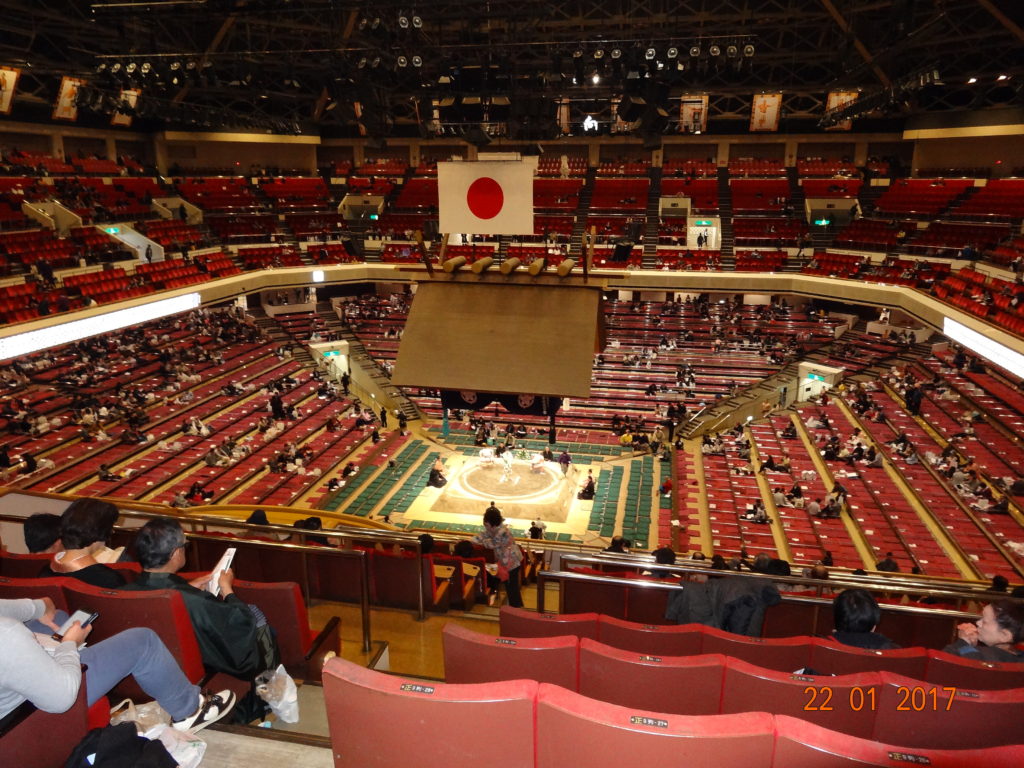
Our assigned seats were on the eleventh row, section B. We arrived just after mid-day to the stadium. Although there were sumo matches from 8 am to 6 pm, the majority of people show up after 2 pm just to watch the top-division sumo wrestlers. Which we also found out, as the lower-division matches were not that interesting. Some people were actually chatting or reading their book instead. However, it was not the case for us, we took the opportunity to take photos from many angles, and photos were nearly impossible after 2:30 pm with everyone streaming past.
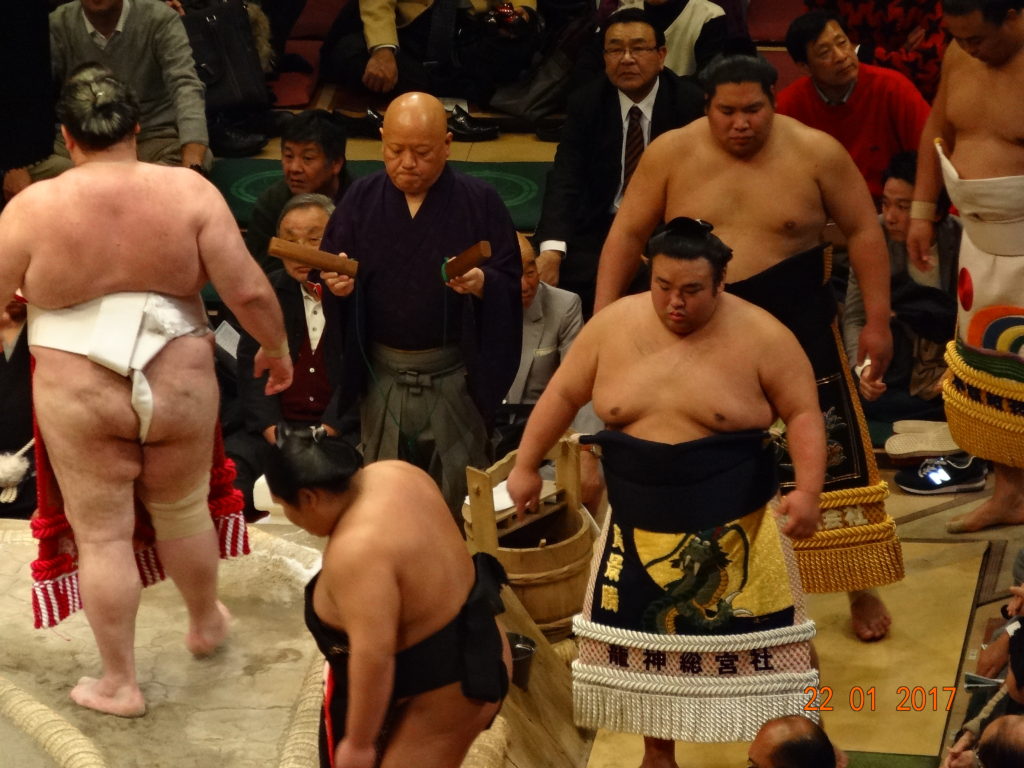
Before the start of each tournament, the rikishi (professional wrestler) came out adorned with their unique keshō-mawashi. Keshō-mawashi consists of a silk belt and apron with the wrestler’s brand sponsor or support group. Usually a keshō-mawashi costs between 400,000 to 500,000 yen.
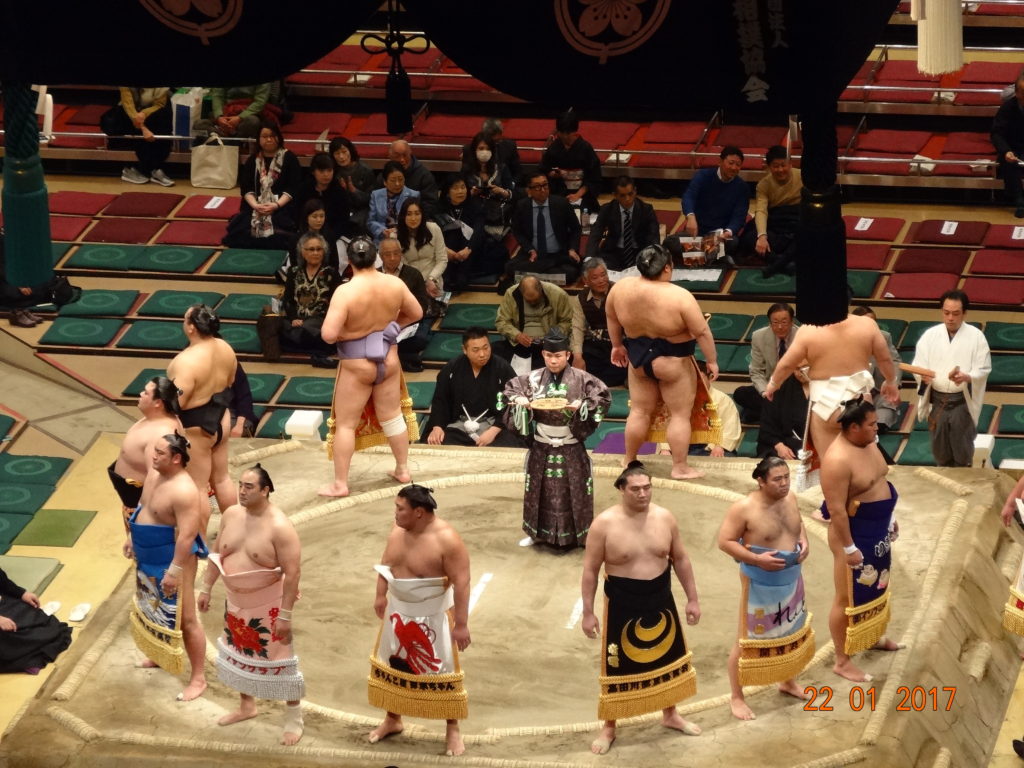
The Tournaments
Each day of the tournament starts with lower division wrestlers and builds up to the top division as the day goes on. The preparations that the sumo wrestlers make before the start of the wrestling match almost take longer than the actual match itself. Wrestlers stamp their feet and make quick stretches.
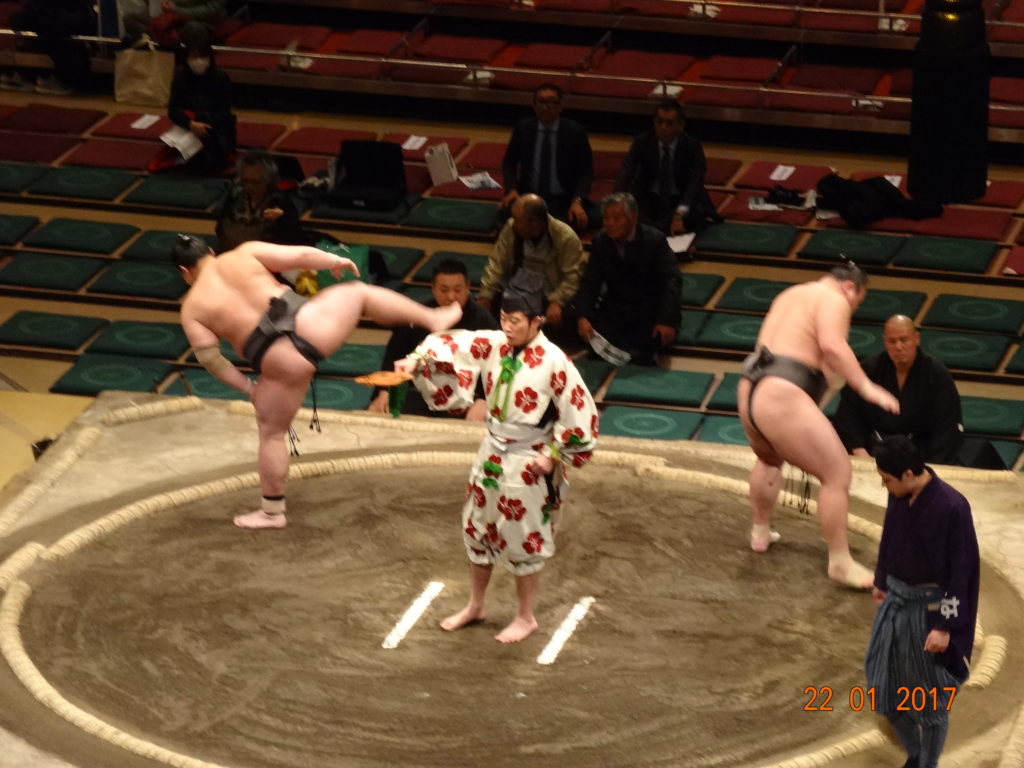
The rules of sumo wrestling are simple: the wrestler who first exits the ring or touches the ground with any part of his body (apart from his soles) loses. The wrestling takes place on an elevated ring (dohyo), made of clay and covered in sand. The ring (dohyo) is considered to be a sacred ground, so the wrestlers also purify the ring with salt in accordance with Shinto tradition.
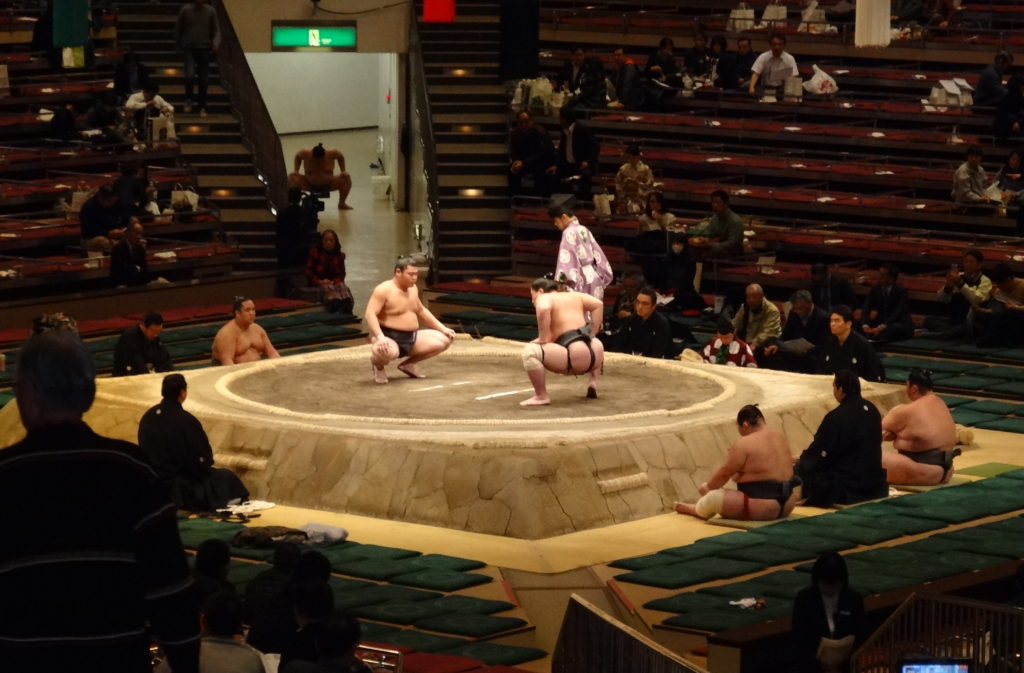
Once the ring has been sufficiently salty, the match starts.


Boom! Within a matter of seconds, it ends. That was fast.

However, even though the preparations take so long to do, it’s what makes sumo wrestling so enjoyable to watch. Having to wait so long for each match to start adds to the suspense of it all. And once it finally begins, our hearts skip a beat.

We also discovered not all professional sumo wrestlers are Japanese, the sumo ring is primarily dominated by foreign wrestlers. Apparently there hadn’t been a Japanese grand champion in around nineteen years.
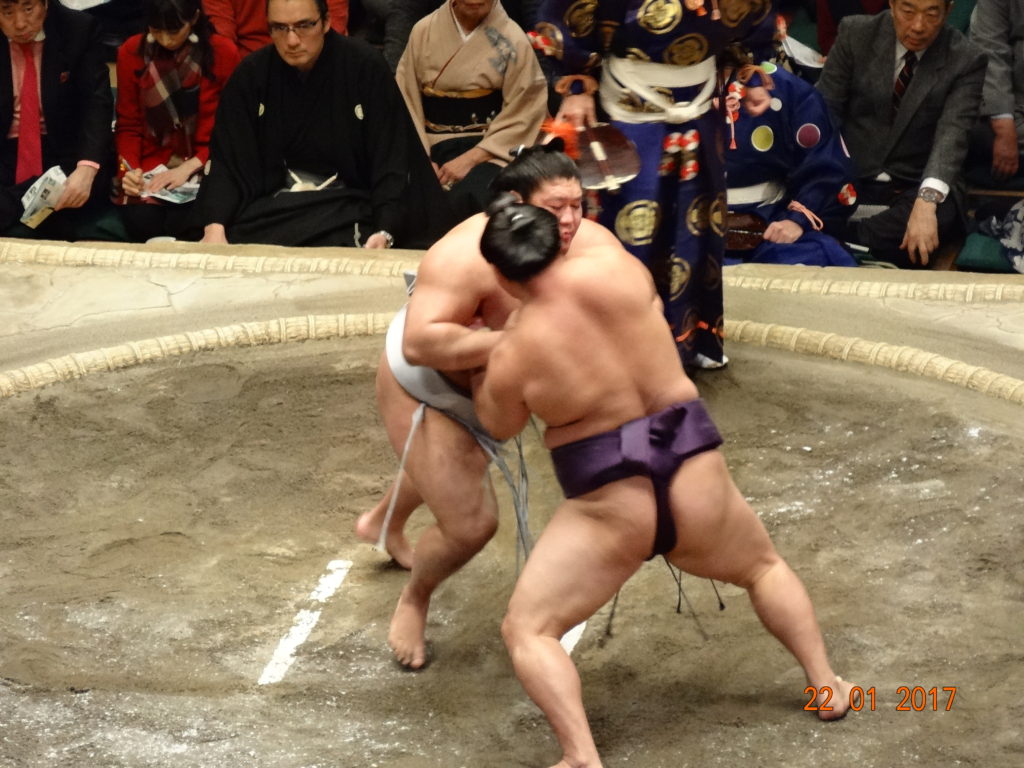
We were extremely lucky, because we not only got the tickets for the grand final match in Tokyo 2017, we also witnessed Kisenosato become the first homegrown grand champion in nearly two decades.
After all it was a fantastic experience for us. We were happy to be part of Kisenosato’s big moment. For sure TV broadcasts of sumo tournaments cannot compare with seeing it live.
Note: The information provided in this post was correct at time of publishing but may change. For final clarification please check with the relevant service.

